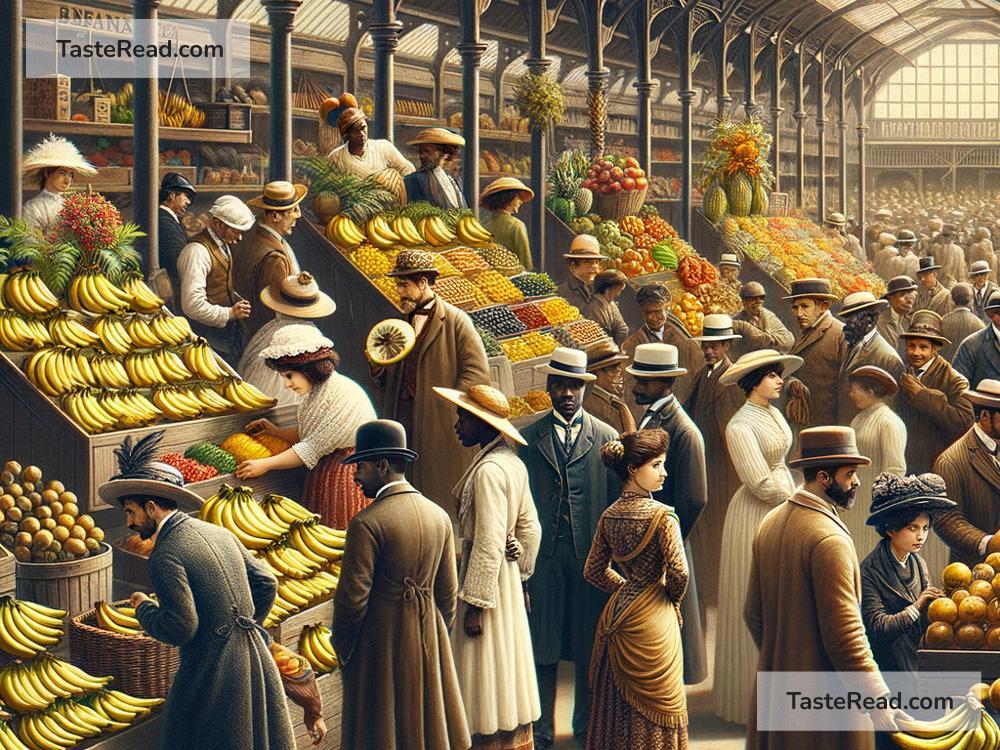The History of the Banana in America: A Simple Look
When you think of bananas, you probably picture the yellow fruit sitting in your kitchen, ready to eat. Bananas are one of the most popular fruits in the United States today. But have you ever thought about how bananas came to America and became so popular? Their story is full of surprising twists, global connections, and even controversy. Let’s peel back the history and take a closer look.
Where Do Bananas Come From?
Bananas are believed to have originated in Southeast Asia, specifically in the area that today includes countries like Malaysia, Indonesia, and the Philippines. People have been eating bananas for thousands of years. They later spread to Africa and, through trade, made their way to Central and South America, where the warm climate was perfect for growing this tropical fruit.
The bananas we eat today are a variety known as the “Cavendish.” However, bananas were being enjoyed in different forms long before the Cavendish variety became popular.
The Banana’s Early Journey to America
Bananas did not arrive in the United States until the late 19th century. Before then, they were primarily grown in tropical regions of the world and were not widely known in America. The first bananas that Americans saw were brought by sailors who had visited the Caribbean. These early bananas were considered exotic, and they were sold in small amounts at port cities like Boston and New York in the mid-1800s. Because refrigeration wasn’t available yet, bananas had to be eaten quickly before they spoiled.
By the 1870s, bananas started becoming more accessible thanks to advancements in transportation. Steamships made it easier to carry bananas over long distances, and better packaging methods helped keep the fruit fresh during its journey. As bananas became more affordable and available, people in America couldn’t get enough of them.
The Banana Boom: The Rise of Big Banana Companies
The true explosion of bananas in America happened in the late 19th and early 20th centuries. During this time, large companies entered the banana business and revolutionized the fruit trade. One of the biggest companies was the United Fruit Company, which would later be known as Chiquita. Another major player was Standard Fruit, which eventually became Dole.
These companies grew bananas in Central American countries like Honduras, Guatemala, and Costa Rica. They established huge banana plantations where thousands of workers harvested the fruit to be shipped to the United States and other countries.
As bananas became cheaper due to large-scale production, they became an everyday household item in the U.S. Americans loved bananas for their convenience and sweetness. They often ate them as a snack, in cereal, or in baked goods like banana bread.
The Political Side of Bananas
While bananas were growing in popularity, their production was causing problems in the countries where they were grown. The big banana companies did not just grow fruit—they had massive power over the economies and governments of Central America. For example, the United Fruit Company owned large amounts of land, controlled railroads and ports, and even influenced local leaders.
This power imbalance sometimes caused tensions. People started calling certain Central American countries “banana republics” because they were so dominated by the banana industry. Workers on banana plantations often lived in poverty and worked long hours for very low pay. Meanwhile, the companies made huge profits.
In some cases, the U.S. government even got involved. For example, in 1954, the CIA helped overthrow the government of Guatemala after United Fruit claimed their business was being threatened by land reforms. These events highlight the darker side of the banana’s history, which involved exploitation and political conflict.
Bananas Today: A Modern Staple
Despite its complex history, bananas remain incredibly popular in America today. In fact, they are the most-consumed fresh fruit in the country. You can find bananas almost anywhere—grocery stores, gas stations, schools, and cafeterias. They are loved for their affordability, portability, and nutritional value.
One thing that has changed over time is concern for sustainability and fair trade. Some modern consumers want to ensure their bananas are grown responsibly, without exploiting workers or harming the environment. Fair trade bananas, which come from farms that prioritize worker rights and eco-friendly practices, are becoming more common.
Something else to watch is the future of the Cavendish banana. This popular variety faces threats from a disease called Tropical Race 4 (TR4), which is spreading across banana plantations around the world. Scientists and farmers are working hard to protect the Cavendish and possibly develop new disease-resistant banana varieties.
Conclusion
The humble banana might seem like a simple snack, but it has a fascinating history. It traveled thousands of miles from Asia to Africa to the Americas. It helped build massive businesses while also sparking challenges for workers and communities in Central America. Over time, it became a staple in American homes and diets.
Today, the banana continues to be a symbol of global connections, showing how a fruit grown in one place can be enjoyed by people halfway across the world. So the next time you peel a banana, take a moment to think about the incredible journey that brought it to your plate.


